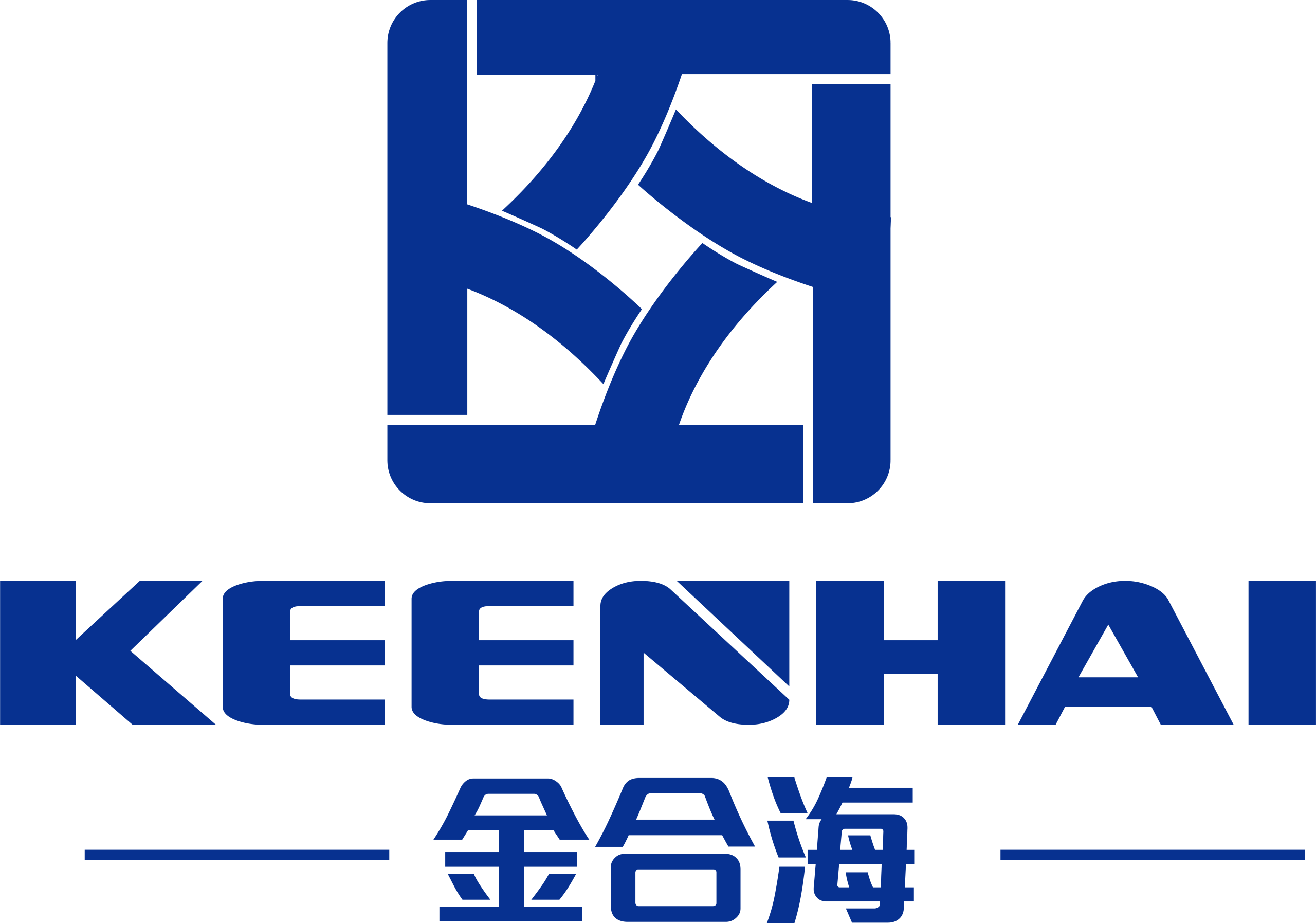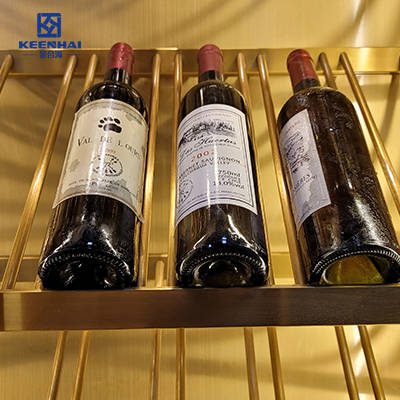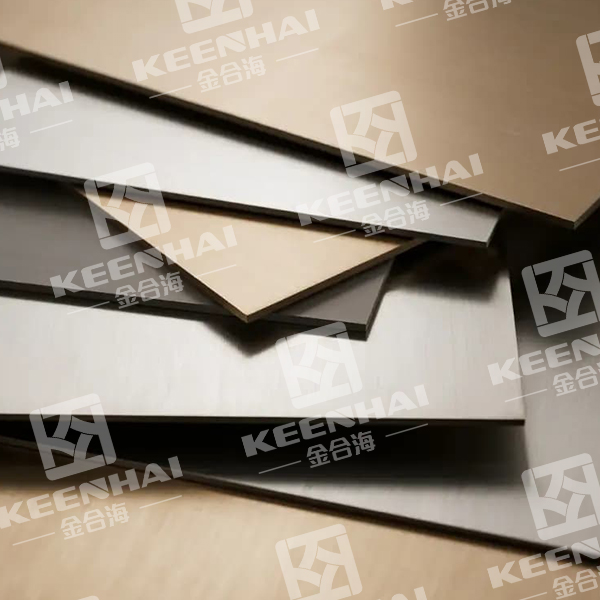Answer:Stainless steel does not rust easily because its surface creates a protective oxide layer when exposed to oxygen. Environmental factors like chlorides or extreme temperatures can challenge this layer, but proper maintenance and selecting higher-alloy grades, like 316 or duplex stainless steel, guarantee long-lasting corrosion resistance for kitchen appliances, industrial equipment, or elevator doors.
Chromium Content and Passive Layer Formation
Role of Chromium in Corrosion Resistance
Chromium is the crucial element in ಸ್ಟೇನ್ಲೆಸ್ ಸ್ಟೀಲ್ that prevents rust and enhances durability. In typical 304 stainless steel sheets, chromium content ranges from 18% to 20%, forming a stable protective layer that resists oxidation. Chromium achieves this by interacting with oxygen to create a passive film, which shields the metal from corrosive agents. High-quality stainless steel sheets used in kitchens and industrial equipment rely on this feature to maintain a long service life.
-
Chromium combines with oxygen to form an invisible protective layer.
-
This layer prevents water, salts, and acids from reaching the steel core.
-
Even if scratched lightly, the chromium quickly reforms a new protective barrier.
The effectiveness of corrosion resistance increases with higher chromium percentages. For example, duplex stainless steel may contain up to 25% chromium, offering superior protection in harsher environments. This mechanism is fundamental for applications like stainless steel elevator doors that require long-term durability in high-traffic areas.
Formation of the Protective Chromium Oxide Layer
The protective chromium oxide layer, also called a passive film, forms naturally when stainless steel is exposed to air or moisture. The layer is only a few nanometers thick, yet it acts as a barrier that keeps corrosive substances from attacking the metal.
-
Oxygen molecules bind with chromium atoms at the surface.
-
A dense, continuous oxide layer develops within minutes.
-
The thickness of this layer is influenced by temperature and environmental conditions.
For instance, 316 stainless steel sheets, which contain both chromium and molybdenum, develop a more robust oxide layer that resists chloride-rich environments such as coastal regions. Using custom stainless steel panels in these locations ensures long-term corrosion protection without constant maintenance. The passive layer is transparent, making the steel appear polished while providing effective protection.
Self-Healing Mechanism of the Passive Film
One of the most impressive properties of stainless steel is its self-healing passive film. If the surface is scratched or slightly damaged, the chromium within the metal reacts with oxygen to rebuild the protective layer automatically. This feature is key for maintaining rust resistance over decades.
-
Minor scratches expose the raw steel surface.
-
Chromium atoms immediately react with oxygen to form a new oxide patch.
-
The process repeats continuously, ensuring ongoing protection.
High-quality stainless steel, such as 304 or 316 sheets, relies on this self-healing ability for applications ranging from industrial machinery to pvdstainlesssteel products. This reduces the need for frequent maintenance and ensures a long-lasting, clean appearance in demanding environments.
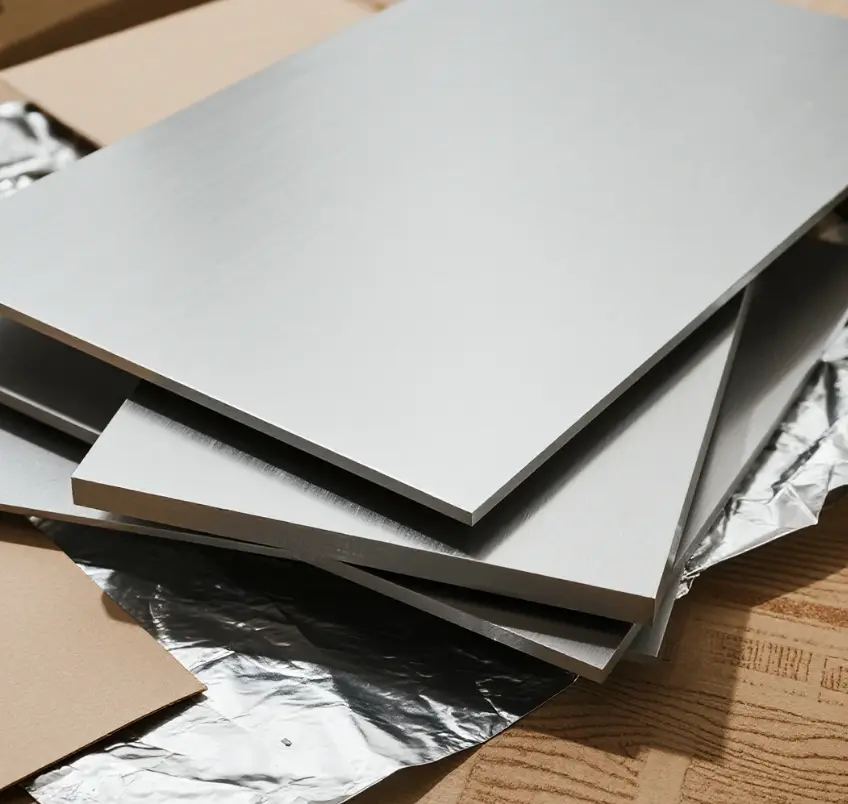
Alloying Elements Enhancing Durability
Nickel, Molybdenum, and Their Effects
Nickel is a core element in ಸ್ಟೇನ್ಲೆಸ್ ಸ್ಟೀಲ್ that stabilizes the austenitic structure, improving both toughness and corrosion resistance. In 304 stainless steel sheets, nickel content typically ranges from 8% to 10%, while 316 sheets increase it to 10%–14%, enhancing resistance to chloride attack in coastal or marine environments. Molybdenum, present in 316 and duplex stainless steels, adds an extra layer of protection against pitting corrosion, especially in harsh chemical environments.
-
Nickel increases ductility and allows the steel to withstand mechanical stress without cracking.
-
Molybdenum reinforces the chromium oxide layer, reducing localized corrosion.
-
Together, these elements ensure longer service life for custom stainless steel sheets used in kitchens, marine structures, and architectural cladding.
The combination of nickel and molybdenum directly affects maintenance costs and long-term durability, providing measurable advantages in industries that demand high corrosion resistance.
Influence of Minor Elements like Nitrogen
Nitrogen, though a minor component, plays a significant role in enhancing both strength and corrosion resistance in stainless steel. By stabilizing the austenitic matrix, nitrogen increases yield strength by 20–30% without compromising ductility. It also helps resist stress corrosion cracking, particularly in chloride-rich or high-temperature environments.
-
Nitrogen atoms fit into the interstitial spaces of the steel lattice, strengthening the metal.
-
It boosts pitting resistance equivalent to adding small percentages of molybdenum.
-
Nitrogen-enriched grades are preferred for industrial piping, chemical tanks, and stainless steel products exposed to harsh conditions.
This small addition allows manufacturers to optimize alloy performance while controlling production costs, resulting in longer-lasting stainless steel panels and components.
Comparing Austenitic, Ferritic, and Duplex Grades
The choice of alloying elements defines the type of stainless steel and its performance characteristics. The table below illustrates key differences:
| Grade Type | Chromium (%) | Nickel (%) | Molybdenum (%) | Key Properties |
|---|---|---|---|---|
| Austenitic (304) | 18–20 | 8–10 | 0 | Excellent corrosion resistance, ductile, non-magnetic |
| Austenitic (316) | 16–18 | 10–14 | 2–3 | Superior chloride resistance, used in marine applications |
| Ferritic | 16–18 | 0–0.5 | 0–0.5 | Magnetic, good corrosion resistance, lower ductility |
| Duplex | 22–25 | 4–6 | 3 | Combines austenitic toughness with ferritic strength, excellent pitting resistance |
Duplex stainless steel achieves high mechanical strength and resistance to stress corrosion through a balanced mix of chromium, nickel, molybdenum, and nitrogen. These grades are ideal for Elevator Door panels and structural cladding where durability, corrosion resistance, and cost efficiency are critical.
By understanding the roles of nickel, molybdenum, and minor elements, engineers can select the optimal stainless steel type for specific applications, ensuring long-term performance while minimizing maintenance.
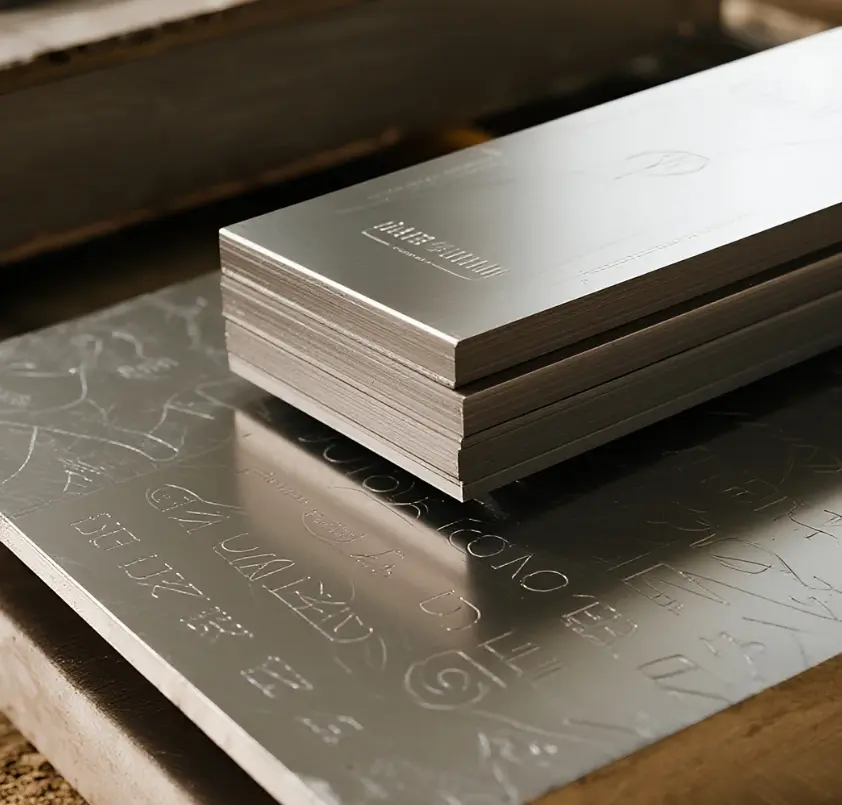
Environmental Factors and Corrosion Risk
Effects of Oxygen Availability on Stainless Steel
Oxygen plays a critical role in maintaining the passive film that protects stainless steel from rust. Without adequate oxygen, the chromium oxide layer cannot reform after damage, leaving the steel vulnerable to corrosion. 304 stainless steel sheets require at least 8–12 ppm of dissolved oxygen in water to maintain the passive layer, while 316 grades tolerate slightly lower oxygen levels due to higher molybdenum content.
-
Inspect the environment where stainless steel panels are installed.
-
Ensure adequate airflow or water aeration to maintain oxygen availability.
-
Monitor oxygen levels in enclosed or submerged settings to prevent localized corrosion.
Limited oxygen can accelerate rust formation in areas like indoor piping, custom stainless steel sheets exposed to stagnant water, or hidden sections of architectural cladding.
Chloride Exposure and Pitting Corrosion
Chlorides, commonly found in seawater and de-icing salts, aggressively attack stainless steel, causing pitting corrosion. 304 stainless steel is especially sensitive to chlorides above 200 ppm, whereas 316 tolerates up to 1000 ppm due to its molybdenum content. Pitting begins at small surface imperfections, often invisible to the naked eye, and can propagate quickly if not addressed.
-
Identify areas exposed to salt spray or industrial chemicals.
-
Select stainless steel grades appropriate for the chloride concentration.
-
Apply periodic cleaning to remove accumulated salts and debris.
| Stainless Steel Grade | Chloride Tolerance (ppm) | Common Application |
|---|---|---|
| 304 | 200 | Indoor kitchen equipment, moderate environments |
| 316 | 1000 | Marine applications, chemical tanks |
| Duplex | 2000 | Offshore structures, high-stress environments |
High chloride environments, like coastal buildings or chemical plants, require careful material selection to avoid stainless steel product failures.
High Humidity, Pollution, and Temperature Considerations
Environmental conditions like elevated humidity, industrial pollutants, and fluctuating temperatures significantly influence corrosion rates. High humidity (above 80%) accelerates oxidation, especially in areas with sulfur dioxide or nitrogen oxide pollutants. Temperature swings between 0–40°C can exacerbate stress corrosion in susceptible stainless steels.
-
Evaluate local climate and pollution data before specifying stainless steel grades.
-
Consider protective coatings or regular maintenance schedules.
-
Use corrosion-resistant variants such as 316 or duplex for harsh urban or industrial zones.
Pollution and humidity can affect not only Stainless Steel Sheet surfaces but also elevator entrances and exterior cladding, reducing their lifespan if ignored. Engineers must calculate expected corrosion rates and select alloys that maintain structural integrity under long-term exposure.
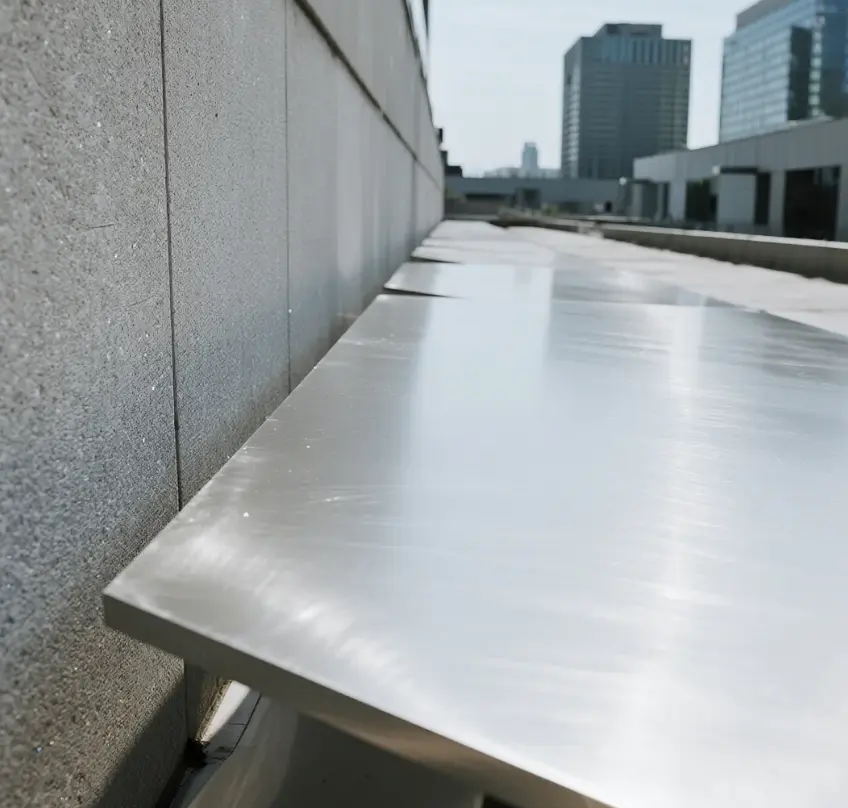
Common Situations Where Stainless Steel Can Rust
Rust Spots on Kitchen and Food Equipment
Even high-quality stainless steel can develop rust when exposed to prolonged moisture and acidic food residues. 304 stainless steel, commonly used in kitchen sinks and countertops, can show rust if left in contact with salty or acidic liquids for over 24–48 hours.
-
Inspect all stainless steel surfaces for minor scratches or stains.
-
Clean spills immediately using mild detergents.
-
Rinse thoroughly and dry to prevent water spots that initiate rusting.
Using ಸ್ಟೇನ್ಲೆಸ್ ಸ್ಟೀಲ್ ಶೀಟ್ with higher chromium content can reduce the risk, and polishing the surface improves longevity. Regular maintenance is key, as even small pitting spots can expand over time under kitchen conditions.
Pitting in Marine Applications
Marine environments pose a significant challenge due to high chloride concentrations. Pitting corrosion often starts in crevices or weld joints, particularly on 304 stainless steel, where saltwater penetrates surface imperfections. 316 stainless steel and duplex alloys resist pitting up to 1000–2000 ppm chloride, making them suitable for boat fittings, coastal cladding, and offshore structures.
-
Identify areas exposed to direct salt spray.
-
Use corrosion-resistant alloys like 316 or duplex.
-
Apply routine inspections and washing with fresh water to minimize chloride accumulation.
Marine applications benefit from pvdstainlesssteel solutions designed for prolonged salt exposure. Ensuring correct alloy selection dramatically extends service life.
Stress Corrosion in High-Temperature Settings
Stainless steel can fail in high-temperature environments if subjected to tensile stress combined with corrosive media. Stress corrosion cracking often occurs in chemical plants, steam systems, or hot water piping, especially with 304 stainless steel.
-
Analyze operational stress and temperature profiles.
-
Opt for high-alloyed grades like 316 or duplex for elevated temperatures.
-
Apply proper thermal treatments and avoid sharp bends that increase stress points.
Monitoring ಸ್ಟೇನ್ಲೆಸ್ ಸ್ಟೀಲ್ ಉತ್ಪನ್ನ installations in industrial settings allows engineers to detect early signs of corrosion, preventing catastrophic failures. High-temperature applications demand both careful material choice and ongoing inspection.
Stainless steel resists rust primarily due to its chromium-rich passive layer, which self-heals when damaged. However, environmental factors, chloride exposure, and improper maintenance can compromise even premium grades. By understanding oxygen availability, alloying elements, and situational risks, engineers and users can select appropriate grades like 304, 316, or duplex, maintain surfaces effectively, and extend the material’s lifespan. Combining careful material selection with routine care ensures long-term performance, whether in kitchens, coastal structures, or industrial installations, making stainless steel a truly durable, reliable choice.
For more information on PVD coated stainless steel and its rust resistance, visit our detailed guide: What is a PVD stainless steel sheet?
